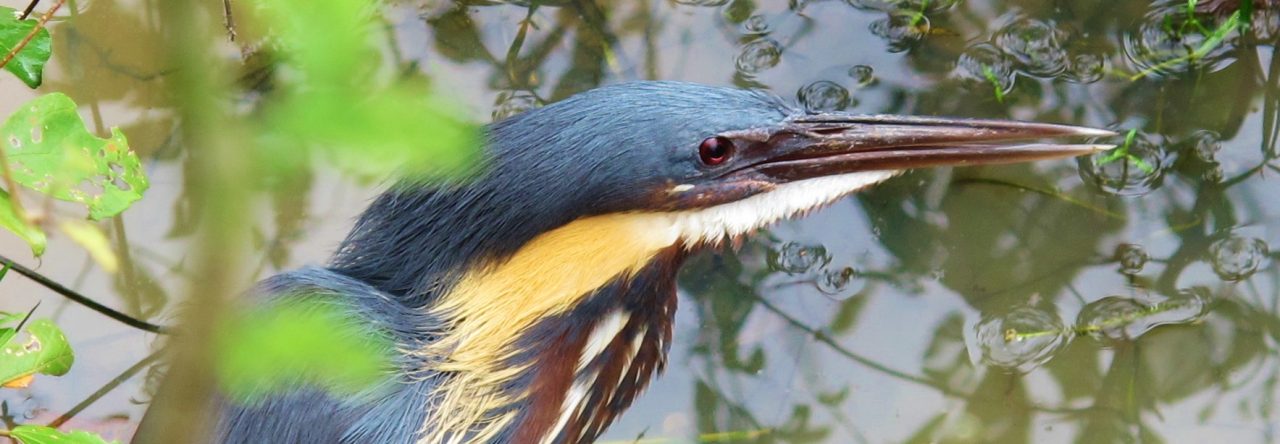
Unlike almost every normal person, I spent a rather chilly New Year’s Eve sleeping in my car in a remote parking lot at the entrance to the Sal del Rey reserve in the Lower Rio Grande Valley. Shortly before midnight, I was awoken by the flashlights of a Customs and Border Protection patrol. The officers seemed extremely perplexed that I was sleeping in my car in the middle of nowhere, at a time when convention dictates I should have been steaming drunk in a bar or at a house party somewhere. I don’t think they believed my story about being a birder, but in any case after (quite a lot of) questioning they left me alone and I went back to sleep for a few hours, before awakening to a freezing cold and windy dawn of 2018.

Let me just say at this point that after such an intense 2017, I had absolutely no intention of year listing again in 2018. Birding often has other ideas, though, and after approximately an hour of birding on January 1st – during which time I racked up some quality birds including Wild Turkey and Common Pauraque – I was already starting to consider the idea. Then I had a chance encounter with an American Woodcock at my second stop of the day, Pollywog Pond near Corpus Christi – this is a species I saw just once in 2017, and not until December 30th!
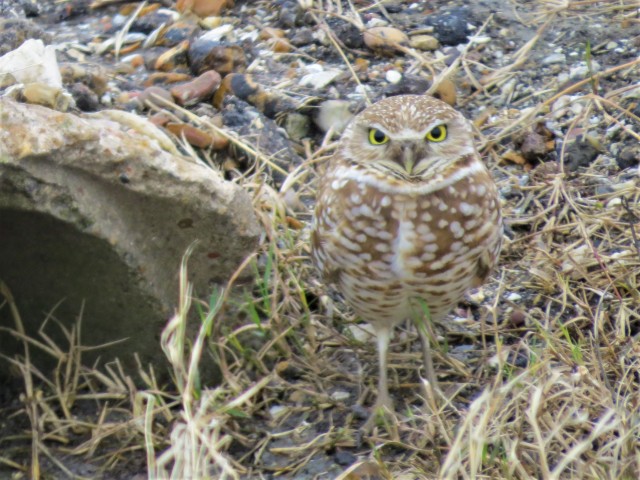
The Tamaulipas Crow was still hanging around at Big Tree SP in Aransas county, so I stopped in to see that – and by the time I had nabbed both Burrowing Owl and Sprague’s Pipit along the roadside just 200 yards apart from each other in Refugio county, the deal was sealed. It would be a shame to waste such a good start to the year – so I would once again be keeping a Texas year list!
I finished the first day of 2018 at Aransas NWR, where a really nice roll call of birds brought me up to 107 species for the day (and the year). These included 11 Horned Grebes and 3 Greater Scaup in the bay, a pair of Wood Ducks on Jones Lake, and a big flock of Wild Turkeys on the grass beside the entrance gate. I also saw my first ever Bobcat crossing the road just north of the reserve, which although not a bird was comfortably the most exciting of the day’s sightings.
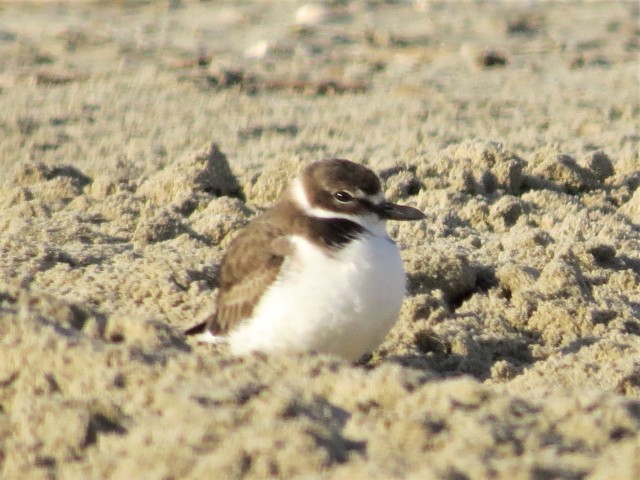
Any Houston-based birder is familiar with birding the “loop” – starting early morning in Galveston, taking the ferry across to Bolivar, and finally spending the afternoon/evening at Anahuac NWR before driving back to Houston. This approach is guaranteed to produce a huge number and wide variety of birds in the winter and migration seasons. On January 6th, I started at dawn on the Texas City Dike, not the most salubrious of birding locations but one which often produces (for my pal James Rieman at least!) regular rare gulls. No unusual gulls for me today, nor even a wintering Common Tern for my troubles despite much searching – but an out-of-season Wilson’s Plover was good to see, and it’s always nice to bag the attractive yet uncommon American Oystercatcher at this site.
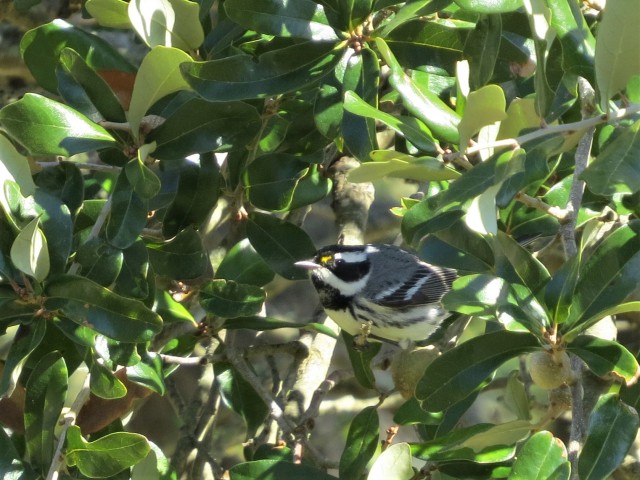
It took me two attempts during the morning to connect with Kempner Park’s wintering male Black-throated Gray Warbler, a bird which was well worth the effort – not only was it an outright lifer for me, but also one I had recently missed in Brazoria county. The bird gave excellent views but was extremely active and hard to photograph.
Bolivar Flats Shorebird Sanctuary always has some good birds on offer, and today in addition to a wide selection of shorebirds (including the often tricky Red Knot), there were three Bonaparte’s Gulls on the shore, a flock of Horned Larks on the beach, and a Palm Warbler in the dunes.
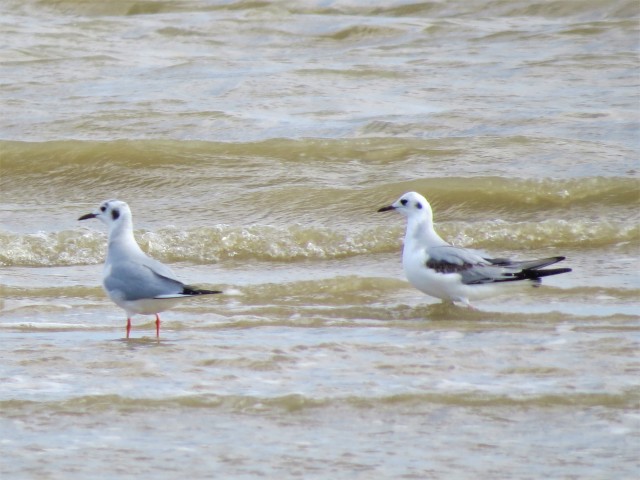
Anahuac NWR always gives up large numbers of birds, and in addition to finding (or refinding, as it was perhaps the same bird previously reported several miles away) a Say’s Phoebe along White’s Ranch Road, I also saw several Canvasback and a Greater Scaup along with legions of commoner ducks and thousands of geese. After dark, a Barn Owl on a roadside fence post was only my second-ever in Texas and – naturally – my first for 2018.
On Sunday I stayed around West Houston, visiting Katy Prairie, Kleb Woods, and Bear Creek Park, adding year birds including Harris’s Sparrow and Golden-crowned Kinglet. Kleb Woods is a regular wintering location for up to half-a-dozen Rufous Hummingbirds. Very rarely, an Allen’s Hummingbird is found among them, but only once every few years. There is currently a very interesting immature male there with a large number of green feathers on its back in a pattern suggestive of Allen’s. This bird will need to molt a little further into adult plumage (or get caught and inspected in the hand) to confirm the identification, but I am keeping my hopes up for the slim chance of an “armchair tick” at some point in the future.
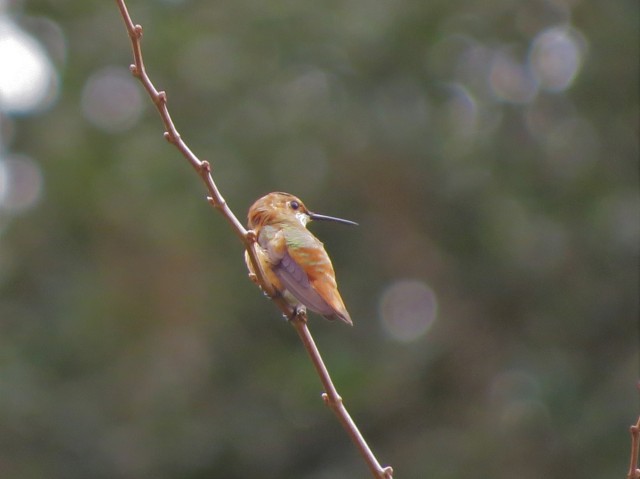
On January 13th I teamed up with Martin Reid and Sheridan Coffey for a spectacular day out in Atascosa, Live Oak, and McMullen counties, halfway between San Antonio and Corpus Christi. We started the day with thousands of Snow Geese, Ross’s Geese, and Sandhill Cranes at a regular wintering location. The sight and sound of these birds at dawn on a cold winter morning stirs the soul, it is incredible and something even non-birders would appreciate. The goose flocks here contain proportionately larger numbers of small, dainty Ross’s Geese compared to the coast near Houston, where almost all the geese are Snow Geese. Among these inland birds, an occasional dark (or “blue”) morph Ross’s Goose shows up. This is a very rare color variation – most Ross’s Geese are pure white, unlike Snow Goose where the dark morph is common. Well, if anyone can find a dark morph Ross’s Goose, it is Martin Reid – and find one he eventually did. Wild geese are very wary but if you approach slowly, and allow them time to get used to you, it is possible to end up fairly close to them, as was the case with this bird:
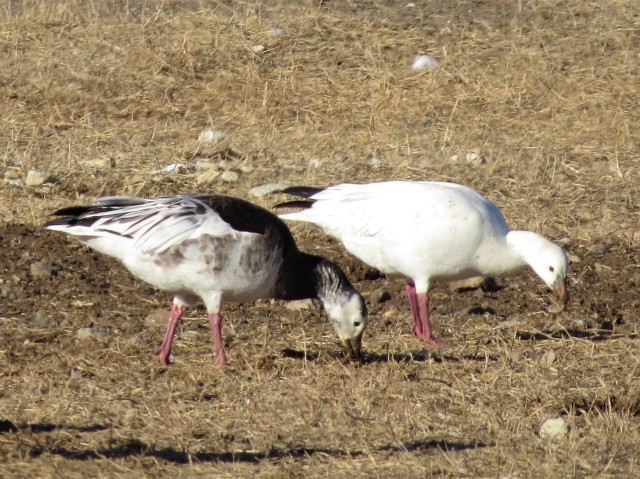
For the rest of the day, we chased around various locations near Choke Canyon Reservoir. This site is one of the most northerly locations for Valley specialities such as Green Jay, Long-billed Thrasher, Audubon’s Oriole, Cassin’s Sparrow – and even Black-tailed Gnatcatcher on occasion. We didn’t find the gnatcatchers, but did enjoy nice looks at most of the others including no fewer than four Audubon’s Orioles:
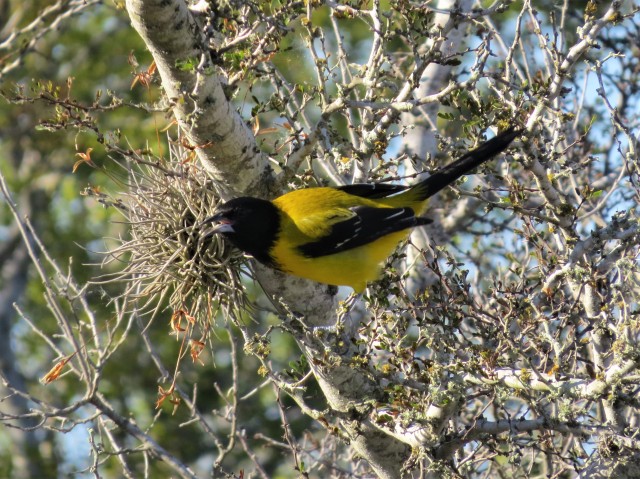
Several other interesting birds at Choke Canyon State Park demanded our attention, namely a hybrid drake Blue-winged/Cinnamon Teal, an off-season Franklin’s Gull, and a Sora walking around in the open at the edge of the reeds:
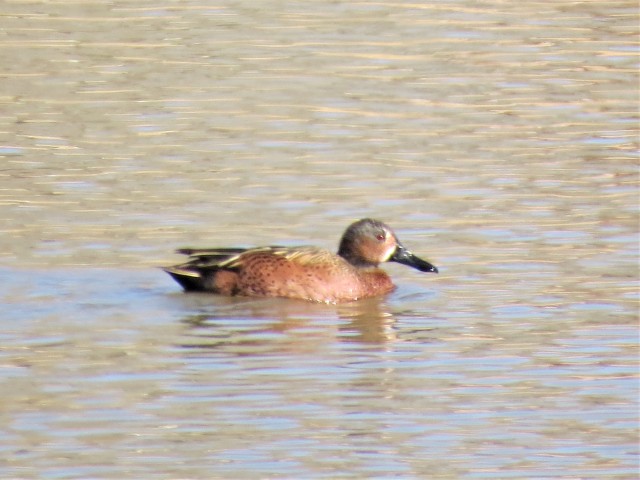

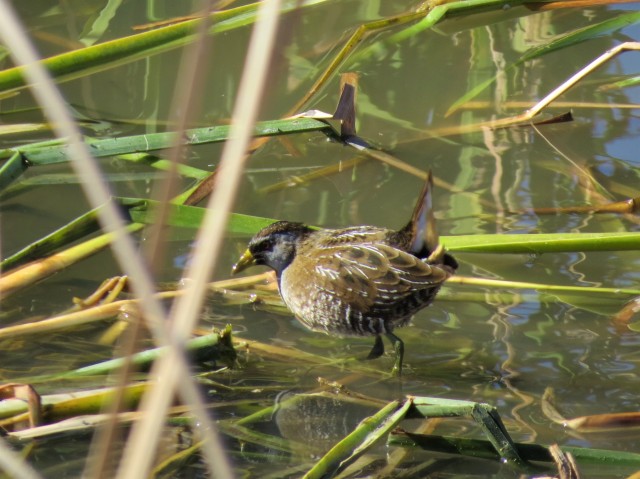
Granger Lake in Williamson county, north-east of Austin, is a huge area containing not only a very large reservoir but also thousands of acres of bare open fields. I spent many hours there in both winter periods of 2017 looking for some of the area’s specialities, especially Mountain Plover and McCown’s Longspur – and indeed have chronicled these often hit-or-miss birding sessions in previous blog posts. One of the big advantages of putting in the time and really getting to know an area is that the birds then become a lot easier to find. My improved local knowledge meant that my visit on January 14th went very smoothly, with all of my main targets seen over the course of a single morning.
I kicked things off with a pre-dawn Short-eared Owl hunting over grassland at the Sore Finger Unit just off FM971. I haven’t seen many “SEOs”, although they are widespread across the Northern Hemisphere, and indeed this was my first in the U.S. It was a true privilege to watch this aerial predator fly on stiff wings over the prairie in the freezing cold of the pre-dawn, and I could not have asked for a better start to the day. Unfortunately my camera was unable to deal with the combination of low light and a moving bird – not to mention finger-freezing conditions – so I was unable to obtain any photos. However I had more luck taking pictures of the two Great Horned Owls also present at this location – my fourth and fifth individual GHOs seen this weekend, quite an amazing number!
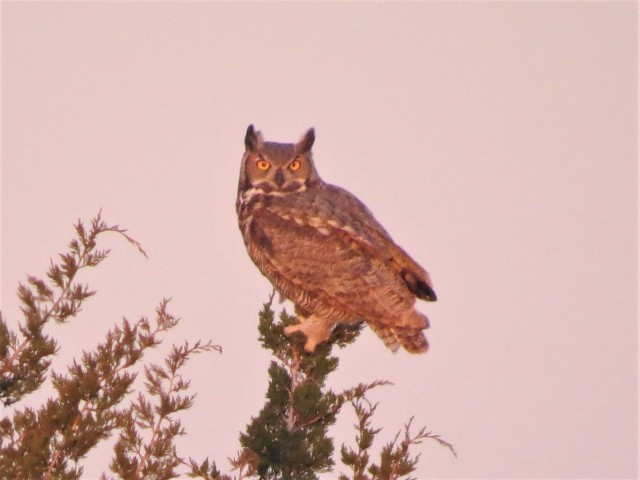
On my last few visits to the area, I have easily found Mountain Plovers in the same general location – the megafield just to the west of CR347 and to the south of CR346. So instead of scouring every field through the telescope, it has become a simpler matter of stopping and scanning from one particular spot. The birds are often distant and not always easy to locate, but the morning light is good here and it didn’t take me long to find a small loose-knit group of five Mountain Plovers.
A very long stone’s throw to the north-east, the barest patches of ground to the north of CR346, between the intersection with CR348 and the first farmhouses, have been the best area this winter to find longspurs. I used to try and find flocks of longspurs by chasing all over the area, driving many miles and scanning as many fields as possible – and this generally resulted in failure (and exhaustion). Here, it is necessary just to wait and regularly scan the correct field as well as keep your eyes and ears open for mobile longspur flocks in flight overhead. Several flocks of McCown’s Longspurs, totalling around 60 birds, were in the area today. Myself and Zach Tonzetich spent plenty of time trying to get good views of one of the flocks on the ground, which always returned to the same two areas, but they would constantly fly up without any provocation and didn’t give themselves up for good looks. Nonetheless, we had tickable views of at least two – and maybe more – Lapland Longspurs in with the McCown’s.
Late last year I had located a Winter Wren on territory in the Willis Creek Unit, a wooded area which is accessible from the small parking lot on CR348 just past the creek crossing. Not only was “my” Winter Wren still in the exact same spot today, but his calls were being answered by another territorial bird on the other side of the creek. And I twice flushed an American Woodcock from right under my feet, which showed very well in flight. My three encounters with Woodcock over the last few weeks have been getting progressively better – at this rate I am due a sighting of one on the ground, instead of just flying away from me!
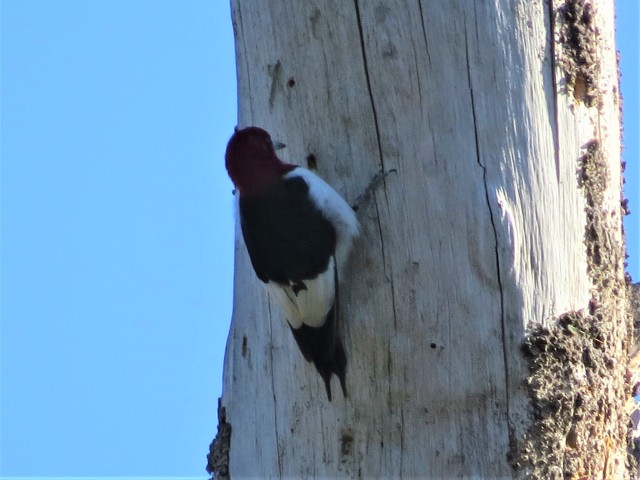
There was just time for one more stop on the way home, at Bastrop State Park, a pleasantly scenic area that also happens to be the only reliable spot in central Texas for the attractive Red-headed Woodpecker – and today I was fortunate to locate one without any difficulty.
Lifer: Black-throated Gray Warbler (total 2,245)
USA tick: Short-eared Owl (total 480)
2018 Texas Year List as of January 16th: 187
